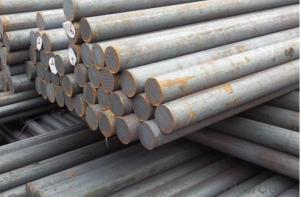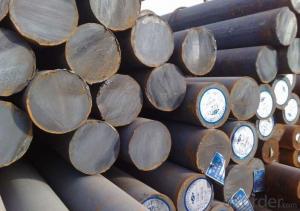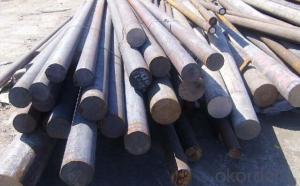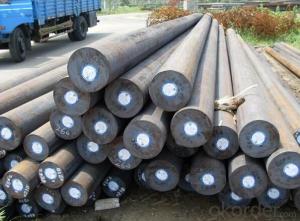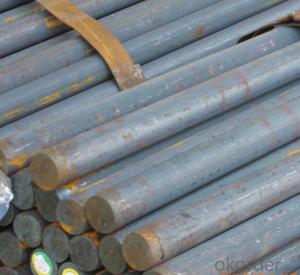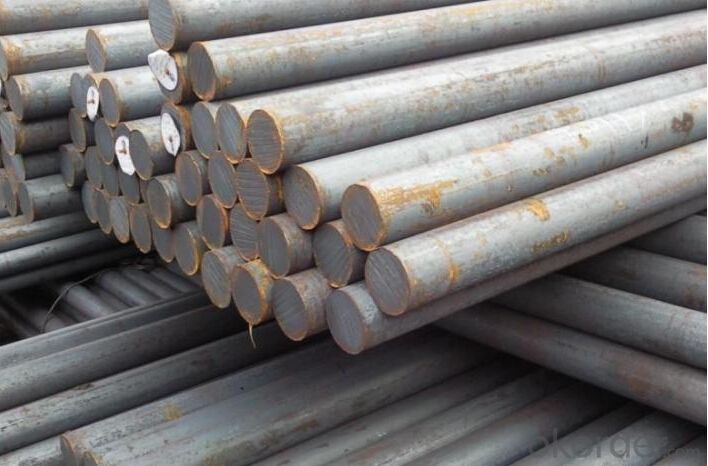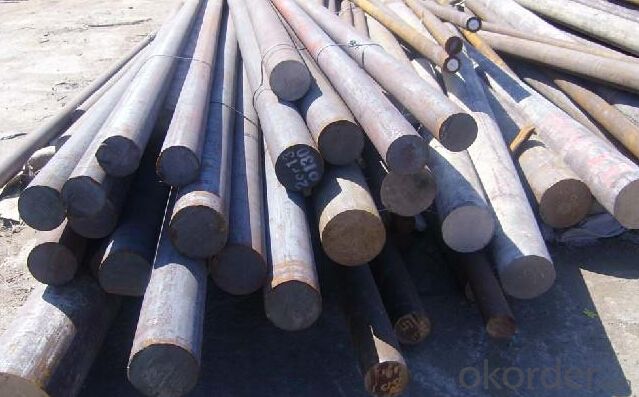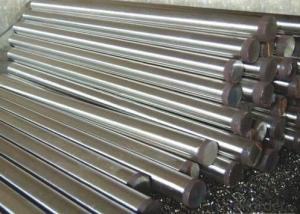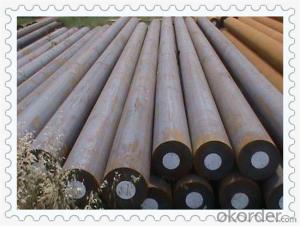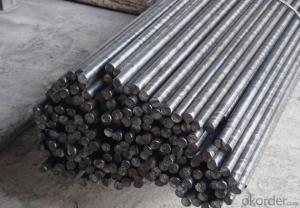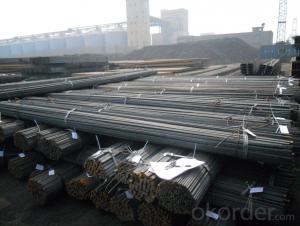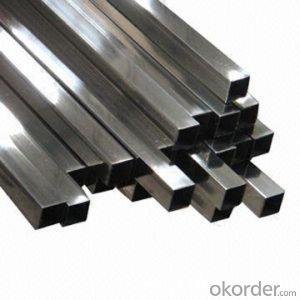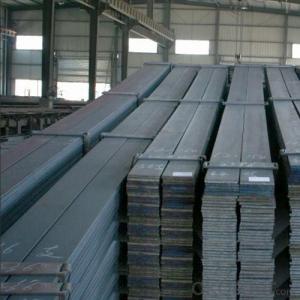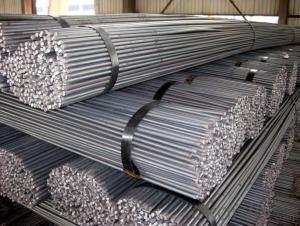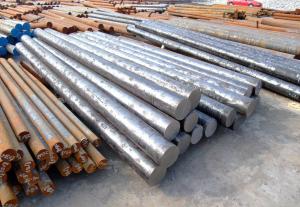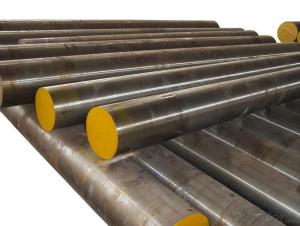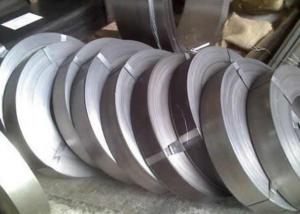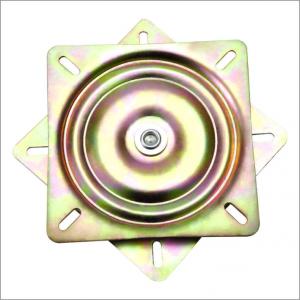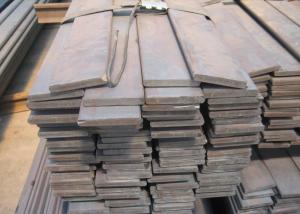Hot Rolled Mild Steel Round Bar Q235 Q345 Q355
- Loading Port:
- Tianjin
- Payment Terms:
- TT OR LC
- Min Order Qty:
- 3 m.t.
- Supply Capability:
- 10000 m.t./month
OKorder Service Pledge
OKorder Financial Service
You Might Also Like
Specification
Hot Rolled Mild Steel Round Bar Q235 Q345 Q355
Name | SAE1045 Carbon Steel Round Bar |
Shape | Round Bar/Square Bar/Flat Bar/Plate/Wire |
Standard | GB/ASTM/SAE/AISI/DIN/JIS/EN/BS |
Surface Treatment: | Black/Peeling/Polished/Machined |
Delivery Condition: | Hot Rolled or Forged/Peeled or Black Surface |
Test | SGS/UT 100% Elements Testing |
Certificate: | ISO/Mill Certificate |
Service: | 24 hours online service / |
more than 20 years trading and manufacture | |
Quality Assurance: | the third party inspection, such as SGS, BV, TUV…etc. is acceptable |
Packaging Details: | seaworthy packaging or as per customer's packing instruction |
Products Overview
Product Name | Typical Grades | Diameter(mm) | Standard adopted |
Carbon Steel | 20 (1020/S20C/C22) | Ø16-Ø300 | GB/SAE/JIS/DIN |
40 (1040/S40C/C40) | |||
45 (1045/S45C/C45) | |||
Bearing Steel | GCr9 (51100/SUJ1) | Ø12-Ø250 | |
GCr15 (52100/SUJ2/100Gr6) | |||
GCr9SiMn (A485-Gr.1/SUJ3) | |||
Cr-Mo Steel | 20Cr (5120/SCr420H/20Cr4) | Ø12-Ø250 | |
40Cr (5140/SCr440/41Cr4) | |||
42CrMo(4140/SCM440/42CrMo4) | |||
Gear Steel | 20CrNiMo | Ø16-Ø600 | |
20CrMn(5115/SMnC420/20MnCr5) | |||
20CrNiMo(8620/SNCM220/20CrMiMo2) |
Packaging & Delivery
Packaging Detail | Sea worthy packing /as per customer's packing instruction |
Delivery Detail | 15 ~ 40 days after receiving the deposit |
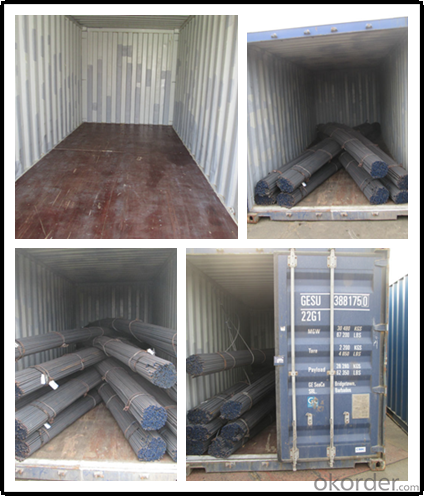
Product Show
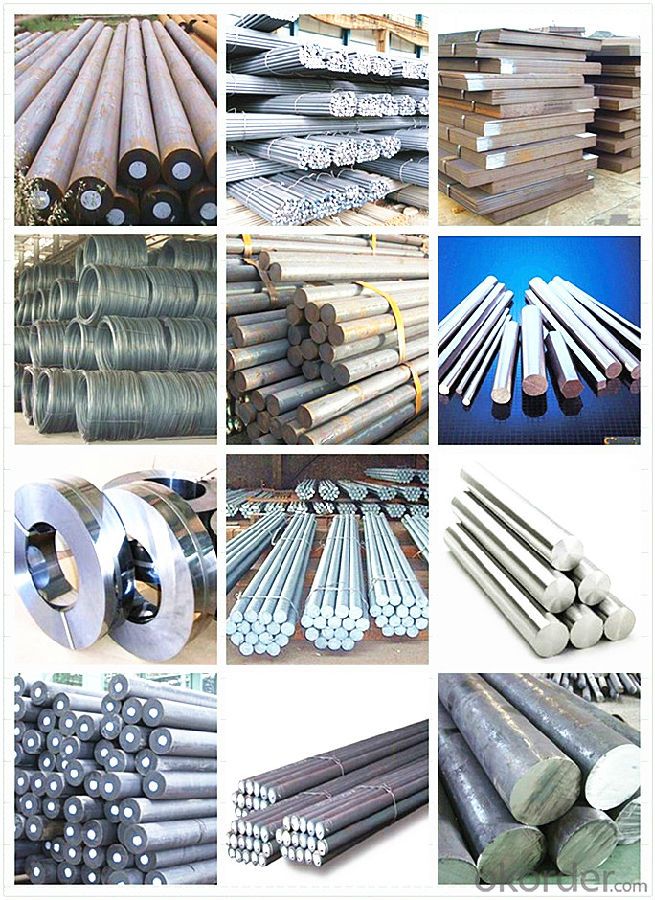
Workshop
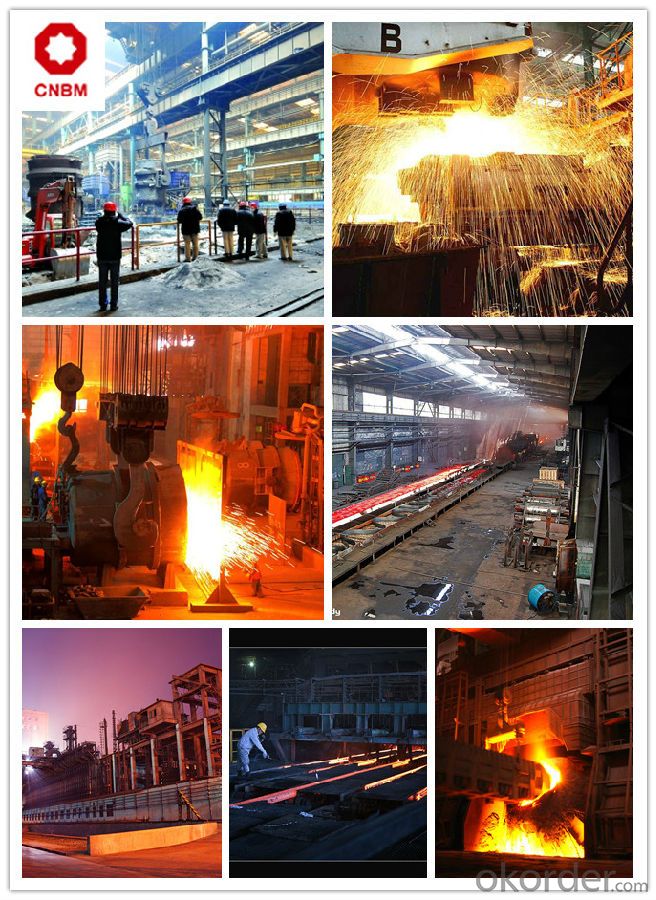
FAQ
Are you a trading company or manufacturer? | Manufacturer |
What’s the MOQ? | 3 metric ton |
What’s your delivery time? | 15-35 days after downpayment received |
Do you Accept OEM service? | Yes |
what’s your delivery terms? | FOB/CFR/CIF |
What's the Payment Terms? | 30% as deposit,70% before shipment by T/T |
Western Union acceptable for small amount. | |
L/C acceptable for large amount. | |
Scrow ,Paybal,Alipay are also ok | |
Why choose us? | Chose happens because of quality, then price, We can give you both. |
Additionally, we can also offer professional products inquiry, products knowledge train (for agents), smooth goods delivery, excellent customer solution proposals. | |
What's your available port of Shipment? | Main Port, China |
What’s your featured services? | Our service formula: good quality+ good price+ good service=customer's trust |
Where are your Market? | Covering more than 160 countries in the world |
- Q: What are the common challenges in heat treating titanium alloys?
- There are various difficulties encountered when heat treating titanium alloys. One of the primary obstacles arises from titanium's strong tendency to react with oxygen, nitrogen, and hydrogen at elevated temperatures. This reactivity can lead to contamination on the surface and the creation of unwanted oxides, nitrides, or hydrides, which can adversely affect the mechanical characteristics of the alloy. Another challenge involves the development of alpha-case, a thick layer of alpha-phase titanium that forms on the alloy's surface during the heating process. This alpha-case is brittle and can significantly diminish the material's fatigue strength and ductility. Consequently, it is crucial to minimize or eliminate the formation of alpha-case during titanium alloy heat treatment. Moreover, titanium alloys have a limited temperature range for effective heat treatment. If the temperature is too low, the desired microstructure and mechanical properties may not be achieved. Conversely, if the temperature is too high, grain growth can occur, resulting in reduced strength and toughness of the alloy. Furthermore, precise control over the heating and cooling rates is often required when heat treating titanium alloys to achieve the desired microstructure and properties. Inadequate or uneven cooling can lead to non-uniform microstructures, residual stresses, or distortion of the component. Finally, the cost of heat treating titanium alloys can pose a challenge. Titanium alloys have a high affinity for oxygen, necessitating the use of specialized equipment such as vacuum furnaces or controlled atmosphere furnaces to maintain a low oxygen environment. These specialized heat treatment processes can be costly and demand careful handling and maintenance to ensure the desired outcomes. To summarize, the common challenges encountered in heat treating titanium alloys include managing reactivity with oxygen, nitrogen, and hydrogen, minimizing alpha-case formation, achieving the appropriate temperature range, controlling heating and cooling rates, and dealing with the expenses associated with specialized equipment and processes. Overcoming these challenges is essential to obtain high-quality titanium alloy components with the desired properties.
- Q: Can special steel be used in the medical device manufacturing industry?
- Yes, special steel can be used in the medical device manufacturing industry. Special steel, such as stainless steel, is often used in the production of medical devices due to its corrosion resistance, high strength, and biocompatibility. It is commonly used for surgical instruments, orthopedic implants, and other medical equipment where durability and hygiene are crucial.
- Q: What are the main characteristics of electrical steel?
- Electrical steel, also known as silicon steel or transformer steel, offers several key features that make it suitable for use in electrical appliances and power equipment. Firstly, it possesses a high magnetic permeability, enabling efficient magnetic flux conduction and reducing energy losses in transformers, motors, and generators. Secondly, electrical steel demonstrates low core loss, encompassing hysteresis loss and eddy current loss. Hysteresis loss refers to the dissipation of energy caused by the reversal of magnetic domains within the material, while eddy current loss arises from circulating currents induced by alternating magnetic fields. The low core loss property of electrical steel ensures high energy efficiency and minimizes heat generation in electrical devices. Another significant characteristic of electrical steel is its high electrical resistivity, which diminishes the magnitude of eddy currents and further reduces energy losses in electrical equipment. Additionally, it possesses a high saturation induction, denoting its ability to reach maximum magnetic flux density. This characteristic enables transformers and motors to function at higher magnetic flux densities, resulting in more compact and efficient designs. Moreover, electrical steel exhibits high mechanical strength, essential for withstanding the stresses and vibrations encountered in electrical devices. It also demonstrates good thermal conductivity, facilitating efficient heat dissipation and enhancing the overall performance and longevity of electrical equipment. In conclusion, electrical steel boasts high magnetic permeability, low core loss, high electrical resistivity, high saturation induction, high mechanical strength, and good thermal conductivity. These properties make it an ideal material for various electrical applications, offering efficiency, reliability, and performance in power generation, transmission, and utilization.
- Q: How does special steel contribute to the oil and gas equipment industry?
- Special steel plays a crucial role in the oil and gas equipment industry as it offers exceptional strength, corrosion resistance, and durability. It is used in the manufacturing of various critical components such as pipes, valves, fittings, and offshore platforms. Special steel's high heat resistance and ability to withstand extreme pressure and harsh environments make it an ideal choice for oil and gas equipment, ensuring reliability and safety in operations.
- Q: What are the different methods of measuring the hardness of special steel?
- There are several methods available for measuring the hardness of special steel. These methods can be categorized into two main categories: destructive and non-destructive testing. 1. Rockwell Hardness Test: This is a widely used destructive testing method that measures the depth of penetration of an indenter into the steel surface. The Rockwell hardness test provides a hardness value based on the resistance of the steel to indentation. It is a simple and quick method that requires minimal sample preparation. 2. Brinell Hardness Test: Another destructive testing method, the Brinell hardness test, involves applying a known load to a hardened steel ball and measuring the diameter of the indentation left on the steel surface. The hardness value is determined based on the ratio of the applied load to the surface area of the indentation. 3. Vickers Hardness Test: This is a micro-indentation test that utilizes a diamond pyramid-shaped indenter. The Vickers hardness test measures the diagonal length of the indentation left on the steel surface and calculates the hardness value based on the applied load. 4. Knoop Hardness Test: Similar to the Vickers test, the Knoop hardness test is a micro-indentation method that uses a diamond pyramid-shaped indenter. However, instead of measuring the diagonal length of the indentation, it measures the length of the long axis. This test is particularly useful for measuring the hardness of thin steel samples or steel coatings. 5. Ultrasonic Hardness Test: This non-destructive testing method measures the hardness of steel by analyzing the propagation of ultrasonic waves through the material. The hardness value is determined based on the correlation between the velocity of the waves and the hardness of the steel. 6. Magnetic Hardness Test: This non-destructive testing method utilizes magnetic properties to measure the hardness of steel. It involves applying a magnetic field to the steel and measuring the magnetic response. The hardness value is determined based on the correlation between the magnetic response and the hardness of the steel. It is important to note that each method has its advantages and limitations, and the choice of method depends on factors such as the type of steel, the required accuracy, the sample size, and the available equipment and expertise.
- Q: What are the different surface finishing techniques for special steel?
- Some of the different surface finishing techniques for special steel include electroplating, powder coating, passivation, etching, and polishing.
- Q: How does special steel contribute to the manufacturing of cutting tools?
- Due to its unique properties and characteristics, special steel plays a crucial role in the manufacturing of cutting tools. Tool steel, also known as special steel, exhibits high hardness, enabling it to withstand the tremendous forces and stress exerted during cutting operations, preventing quick deformation or wear of the cutting tools and ensuring their longevity and efficiency. In addition, special steel possesses excellent wear resistance, minimizing the wear and tear on the tools subjected to constant friction and abrasion. This improves the tool's lifespan, reducing the need for frequent replacements and enhancing cost-effectiveness in the manufacturing process. Furthermore, special steel offers superior heat resistance, maintaining its hardness and integrity even under high temperatures. This allows cutting tools to perform consistently and precisely, even in extreme heat conditions, preventing thermal degradation and loss of hardness. Moreover, special steel used in cutting tool manufacturing exhibits excellent toughness and strength, enabling the tools to endure heavy loads and impacts without fracturing or chipping. The combination of hardness, wear resistance, heat resistance, toughness, and strength provided by special steel ensures the durability and reliability of cutting tools, allowing them to perform efficiently and accurately. Overall, special steel significantly contributes to the manufacturing of cutting tools, providing the necessary properties to withstand demanding cutting conditions. Its high hardness, wear resistance, heat resistance, toughness, and strength ensure that cutting tools remain sharp, durable, and efficient, enhancing productivity and precision in various industries, including automotive, aerospace, and manufacturing.
- Q: What are the limitations of using special steel in marine environments?
- Special steel, while highly durable and resistant to corrosion, does have its limitations when used in marine environments. One of the main limitations is its susceptibility to pitting corrosion. Due to the presence of chloride ions in seawater, special steel can develop localized corrosion known as pitting, which can weaken the material and compromise its structural integrity. Furthermore, special steel may also be prone to stress corrosion cracking in marine environments. When exposed to tensile stress and corrosive agents, such as saltwater, the material can develop small cracks that propagate over time, leading to catastrophic failures. This makes it crucial to carefully monitor and manage the stress levels to prevent such occurrences. Additionally, special steel can be affected by galvanic corrosion when in contact with different metals or alloys in a marine environment. This occurs due to the electrochemical potential difference between the metals, resulting in accelerated corrosion of the less noble material. This requires careful consideration when selecting other materials for use in conjunction with special steel to avoid galvanic corrosion. Moreover, the cost of special steel can be significantly higher compared to other materials used in marine environments. This can pose a limitation, especially for projects with budget constraints. The higher costs of special steel may make it less financially viable for certain applications, leading to the exploration of alternative materials for marine applications. Lastly, the weight of special steel can also pose limitations in marine environments. Its density can contribute to increased weight, which affects the buoyancy and overall stability of marine vessels. This can impact the performance and maneuverability of ships and offshore structures, necessitating careful engineering and design considerations. In conclusion, while special steel offers excellent durability and corrosion resistance, it does have limitations when used in marine environments. Pitting corrosion, stress corrosion cracking, galvanic corrosion, higher costs, and weight considerations are some of the factors that need to be carefully managed and accounted for when utilizing special steel in marine applications.
- Q: How does special steel contribute to reducing product defects during manufacturing?
- Special steel contributes to reducing product defects during manufacturing by offering superior strength, durability, and resistance to corrosion. It ensures the production of high-quality components that are less prone to wear, deformation, or breakage, minimizing the occurrence of defects. Additionally, special steel's consistent composition and precise manufacturing processes enable tighter tolerances, resulting in more accurate and reliable products.
- Q: What are the casting methods for special steel?
- There are several casting methods used for special steel, including investment casting, sand casting, and centrifugal casting. Investment casting, also known as lost-wax casting, involves creating a wax model of the desired part, coating it with a ceramic shell, and then melting the wax away to leave a cavity. Molten steel is then poured into the cavity, creating the final product. Sand casting involves creating a mold using a mixture of sand and a binder, and then pouring molten steel into the mold. Centrifugal casting uses centrifugal force to distribute molten steel into a mold, resulting in a denser and more uniform casting.
Send your message to us
Hot Rolled Mild Steel Round Bar Q235 Q345 Q355
- Loading Port:
- Tianjin
- Payment Terms:
- TT OR LC
- Min Order Qty:
- 3 m.t.
- Supply Capability:
- 10000 m.t./month
OKorder Service Pledge
OKorder Financial Service
Similar products
Hot products
Hot Searches
Related keywords

